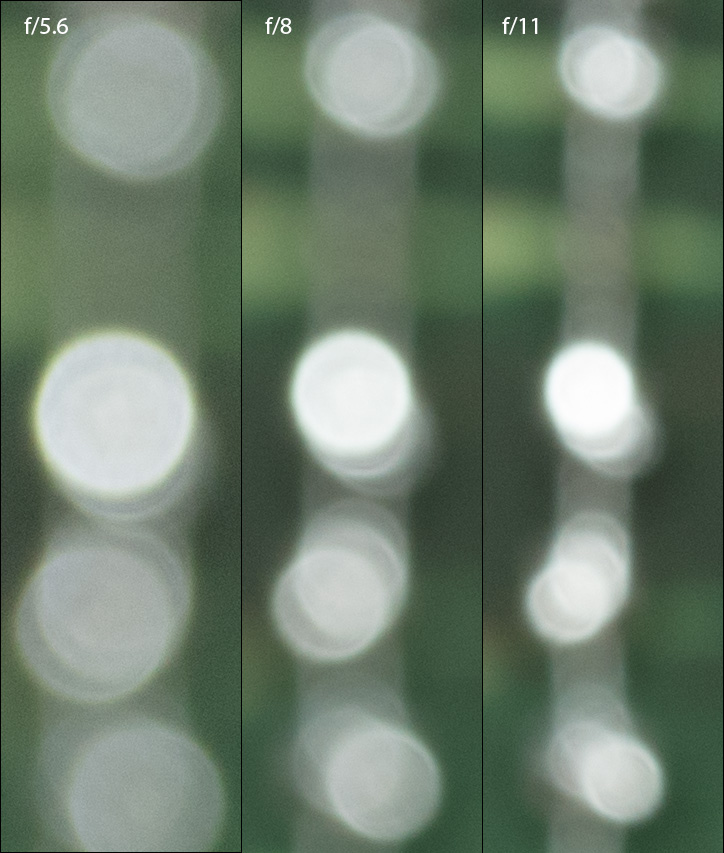|
Sigma 150-600mm f/5-6.3 HSM DG OS Contemporary - Review / Test - Analysis |
|
Lens Reviews -
Canon EOS (Full Format)
|
|
Page 2 of 3

Distortion
The Sigma lens produces slight pincushion distortions throughout the zoom range. They vary between 1.1% and 1.4%. In critical scenes you may spot this but it's usually not an issue.
Vignetting
Vignetting is visible at maximum aperture throughout the range. It's most pronounced at 150mm f/5 at 1.4EV (f-stops) and slightly less so at longer focal lengths. Stopping down to f/8 pushes the light falloff below 0.7EV which is good enough for sure.

MTF (resolution & chromatic aberrations)
Some may be surprised by the relatively moderate center performance figures below. Please note that two effects are coming together here. First of all the "common" peak performance on the EOS 5Ds R, our test camera, is reached around f/4. The Sigma lens is slower than that thus diffraction effects are already decreasing the resolution potential at all aperture settings. On top of that comes the fact that we are talking about a super tele lens here. Remember that this is a chart-based MTF system and the longer the focal length, the longer the distance between camera and chart. Beyond 300mm air diffusion is starting to have an impact and as you can conclude, it's correspondingly more pronounced the more you zoom out. Please keep that in mind here.
Overall the Sigma lens is capable of delivering a very decent performance throughout the range albeit just like its bigger brother it has its issues on a 50mp camera at least.
The center and near-center performance is very good at 150mm. The borders are decent whereas the corners are softer. The sweet spot is reached at 300mm. The borders are receiving a boost to good to very good levels. The corner quality is still not great at f/5.6 but it's not bad at f/8. The center performance is still pretty good at 450mm but the quality of the outer image region drops substantially. At 600mm, the center quality is still good at f/6.3 but very fine details are gone here. The near-center quality drops quite a bit here and the borders/corners are just soso. In essence, you should stop down to f/8 if you can. The sharp center zone broadens at f/8 with good to very good results.
The centering quality of the tested sample was Okayish at 150mm but this got less apparent towards longer focal lengths.
Please note that the MTF results are not directly comparable across the different systems!
Below is a simplified summary of the formal findings. The chart shows line widths per picture height (LW/PH) which can be taken as a measure for sharpness.
If you want to know more about the MTF50 figures you may check out the corresponding Imatest Explanations

Chromatic Aberrations (CAs)
Lateral chromatic aberrations (color shadows at the image borders) are very well controlled in the middle range but they also remain unobtrusive at the extreme ends with an average CA pixel with of 1-1.5px at the image borders.

Bokeh
The max aperture of the Sigma lens may be moderate but a shallow depth-of-field is still easily possible at longer focal lengths and medium focus distances. So let's have a look at the bokeh.
Surprisingly the bokeh is better compared to the Sports variant. Out of focus highlights have a very smooth disc with just a bit of outlining. As usual you'll also have to live with "cat's eyes" at the image borders at "large" apertures.
 As far as the general out-of-focus blur is concerned - the background is quite smooth (left hand sample crop below) and the foreground blur is even a bit better.
As far as the general out-of-focus blur is concerned - the background is quite smooth (left hand sample crop below) and the foreground blur is even a bit better.

|